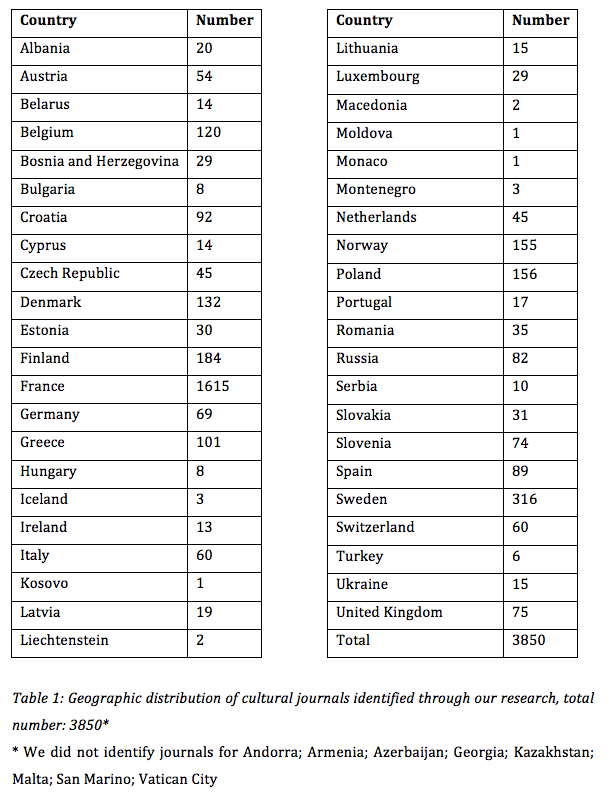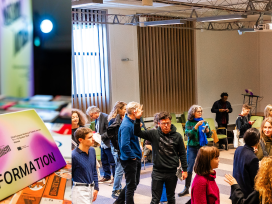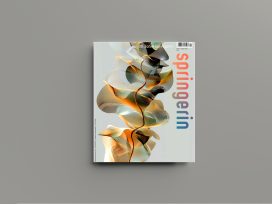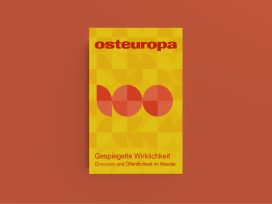Download the full study (you will be asked to provide anonymous information via a google form before downloading)
Executive summary
This report provides the results of in-depth research into the European cultural journals sector that aimed to define and map cultural journals, their practices, motivations and the challenges in the field. The European cultural journals sector is highly diverse in terms of formats, style, and readership, and the journals cover a wide range of topics, whether literature, other types of arts, or political issues. Research has shown three important roles of cultural journals:
- Contributing to the shaping of cultural identities, including national and transnational European identity;
- Facilitating debates by generating discourse and exchange across different fields of expertise;
- Stimulating creative communities of authors, artists, performers and other cultural makers in Europe.
To date there has been no systematic study of the European cultural journals sector. The following research has been commissioned to fill this gap and represents a first step towards exploring the European cultural journals sector on a larger scale. The research provides insight into common characteristics of cultural journals through which the field can be demarcated, offers an overview of cultural journals in Europe, and shows their diversity in terms of subjects, styles, readership and more. The research was conducted with three aims in mind:
- Describing shared characteristics of cultural journals: Building a list of common traits that help to identify cultural journals and demarcate the sector;
- Providing a first inventory of journals in Europe: Giving an overview of the cultural journals in Europe and their geographic distribution;
- Gaining insight into the production, audiences and aims of cultural journals: Providing a more detailed understanding of the sector including aims, production practices, formats, target audiences and the challenges encountered in this field.
Towards an inclusive definition of a broad genre: Cultural journals as context-specific niche publications
We have developed a multi-methodological approach and built a framework that allowed us to do justice to the diversity of the journals, emphasising their cultural specificity and context-dependence. Cultural journals can be defined as self-reflective community media and as context-specific niche publications that complement other media.
Our research identified three dimensions through which cultural journals can be distinguished from other media outlets: temporality; being experimental in style, often essayistic; depth of analysis. Here, we discuss our findings per dimension.
- Temporality: Cultural journals work predominantly at a meso-temporal level, i.e. they are not as topical as daily newspapers, but at the same time they still provide insight into the zeitgeist of a particular moment, and address issues relevant to society at the time of publishing. In our sample, most journals publish less frequently than newspapers. This is different for their online publications, which are more often on a daily basis. Similar to other periodicals such as newspapers, cultural journals have not found a common way to monetise their online content. It therefore remains a question as to whether updating their online editions more frequently than print changes the nature of the journals. Indeed, as cultural journals can be seen to operate in-between newspapers and academic publishing, similar trends can be found in the different fields: In the latter genres, there has also been an increase in publication frequency.
- Experimental in style, often essayistic: Being more distanced from economic incentives and often carried by relatively small editorial teams, cultural journals assume a specific position in the media landscape and provide space for experimenting, though foregrounding textual genres. In our sample, there was a distinct preference for text-based genres, but at the same time, other formats, including visuals, were highly present. The most common styles adopted (essays, reviews and interviews) indicate how cultural journals have developed a particular niche in-between academic publishing and news media.
- Depth of analysis: The specific temporal focus and freedom in style of cultural journals allow them to cover issues more in-depth than other media. As a result, cultural journals often share an analytical intent and a level of reflection with academic work. Cultural journals form a particular niche in-between academic publishing and news media demonstrating their specific role in the media landscape and society at large as providing analysis that is not caught up in the immediacy of current events, but is quicker and often more accessible than academic publications. Their self-reflective nature becomes clear in the way that they provide in-depth, critical analysis and complementary perspectives on a regular basis.
Mapping European cultural journals
The diversity of cultural journals due to their context specificity also means that there is great variation in their distribution across Europe (See table 1 for an overview of the journals we found in our research). There are only few national studies and official statistics available about the number of cultural journals, so it is difficult to gauge the accuracy of our overview. Another reason for this is that, the European cultural journals sector is constantly changing, with journals appearing and disappearing in relatively short periods of time, making it difficult to capture it accurately. However, this first attempt of mapping cultural journals has identified almost 4,000 journals in Europe.

Production, publication and the audiences of cultural journals
Our research has looked at the production, styles and audiences of cultural journals. Figures on this can be found in the full report. Here, we highlight some of the main findings from a survey among cultural journals with 480 respondents:
a) General characteristics:
- the Arts are the most important focus of cultural journals and in particular the ‘Literary arts’ (247, 15% of the responding journals);
- the oldest cultural journal that participated in our survey first came out in 1836, the youngest were initiated in 2017. Even though some cultural journals have been around for decades, starting in the 1800s, the huge majority of our sample started publishing in the post-war period;
- the majority (82%) of our respondents reported that they do not publish more often than once a month, with the most common publication frequency being on a quarterly basis;
- 49% of the sample publish in both print and online, 42% do so in both print form only, and 9% are web-only publications.
b) Publication
- the journals show a clear preference for specific publishing genres, such as essays, reviews and interviews. The essay and the review are used in 88% of the sampled journals, and the interview in 84%;
- beyond still images, such as drawings, photos and illustrations, which are used by 95% of the survey participants, the use of non-textual materials is limited.
c) Organisation and finances of cultural journals
- in terms of staff at the cultural journals surveyed, employees are typically between 25-54 years old, and there are slightly more women than men working in the sector (respectively 51% versus 49%, and 0.3% other);
- In terms of contracts, full-time contracts are the most common (35 or more paid working hours per week), but there is still a considerable group of people who only work part-time, meaning 20 or less hours per week, and 30% of the journals relied on freelancers for more than half or half of the work that was done in the last year;
- a considerable amount of cultural journals depend on voluntary, unpaid work: 31% of the journals relied exclusively on volunteers, while another 22% relied on volunteers for half or more than half of the work in the last year;
- most people working at cultural journals come from academia, journalism and the arts and literary sector;
- the most important sources of income of cultural journals are print subscriptions and sales of individual printed issues. The second most important source of income is national or regional funding from governmental institutions. Digital subscriptions and digital sales of individual issues are less important in comparison;
- 41% of the respondents indicated that financial stability has remained unchanged over the past five years, 40% indicate that this has decreased, and 14% perceived an increase.
d) Audiences of cultural journals
- most of the readers of cultural journals are in domains that suggest high education levels and working in cultural functions;
- a large majority of cultural journals is read predominantly in only one country, but there is also a considerable amount of journals (81, 18%) that are read in more than one country;
- the majority prints no more than 1000 copies per issue (66%) and sells up to 1000 copies per issue (77%);
- online reach is larger: 30% reach 5,000 or more readers per month, a significant part of these 30% reach up to 100,000 unique monthly visitors (14%);
- Facebook has become an important tool to communicate with readers among the respondents, while events organised by the journals, as well as promotion via bookstores, are also still highly important.
Concluding
Our research outlines the specific role of cultural journals in the media landscape and society at large as providing analysis that is not caught up in the immediacy of current events, but is quicker and more accessible than academic publications, stressing their self-reflective nature. They provide in-depth, critical analysis and complementary perspectives on a regular basis. The data confirms the societal relevance and the functions that cultural journals fulfil in our societies, as they cater to a specific type of audience, which includes those working in fields of cultural and political influence, whether it is academia, education or the arts.
Our research identified a number of open questions and highlighted challenges that cultural journals are faced with. Further research would need to explore these areas with the aim to consider what are the main threats and opportunities for cultural journals to perform their vital societal role optimally. First, we have identified the importance of the context in which journals operate. Our data can be used in further analysis to make cross-national comparisons, identifying relevant geographic differences, most importantly to consider whether there are significant differences in the sustainability in certain areas. This may be particularly urgent in those places where cultural journals are compensating shortcomings and limitations of other media genres and where even more is at stake in terms of cultural issues in society.
Further research could also consider the dynamic nature of cultural journals that was identified by our research: Though cultural journals have a long history there are also many journals in our sample that have been established in the last few years. Future studies could determine whether this is due to vibrancy or precariousness in the field. Here we have indicated the very specific nature of cultural journals as expanding the media landscape, addressing specific audiences, experimenting with format and introducing alternative perspectives. Cultural journals provide an important space for reflection and support a critical and self-reflective public.
Corresponding author: Prof. dr. Tamara Witschge, t.a.c.witschge@rug.nl
Media Studies and Journalism, University of Groningen
This study has been commissioned by Eurozine as part of the project “Eurozine – Network of cultural journals”, which is co-funded by the Creative Europe programme of the European Union.
The European Commission support for the production of this publication does not constitute an endorsement of the contents which reflects the views only of the authors, and the Commission cannot be held responsible for any use which may be made of the information contained therein.
Download the full study (you will be asked to provide anonymous information via a google form before downloading)








